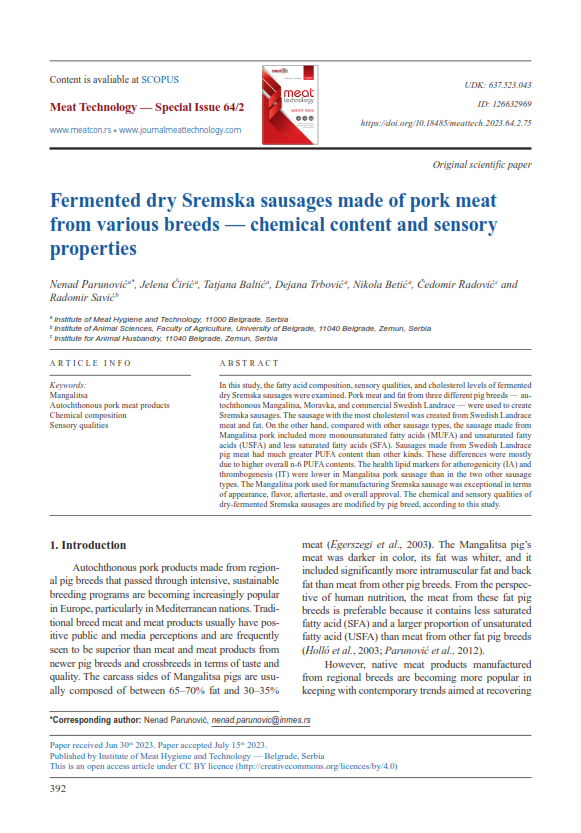Fermented dry Sremska sausages made of pork meat from various breeds - chemical content and sensory properties
Abstract
In this study, the fatty acid composition, sensory qualities, and cholesterol levels of fermented dry Sremska sausages were examined. Pork meat and fat from three different pig breeds—autochthonous Mangalitsa, Moravka, and commercial Swedish Landrace—were used to create Sremska sausages. The sausage with the most cholesterol was created from Swedish Landrace meat and fat. On the other hand, compared with other sausage types, the sausage made from Mangalitsa pork included more monounsaturated fatty acids (MUFA) and unsaturated fatty acids (USFA) and less saturated fatty acids (SFA). Sausages made from Swedish Landrace pig meat had much greater PUFA content than other kinds. These differences were mostly due to higher overall n-6 PUFA contents. The health lipid markers for atherogenicity (IA) and thrombogenesis (IT) were lower in Mangalitsa pork sausage than in the two other sausage types. The Mangalitsa pork used for manufacturing Sremska sausage was exceptional in terms of appearance, flavor, aftertaste, and overall approval. The chemical and sensory qualities of dry-fermented Sremska sausages are modified by pig breed, according to this study.





